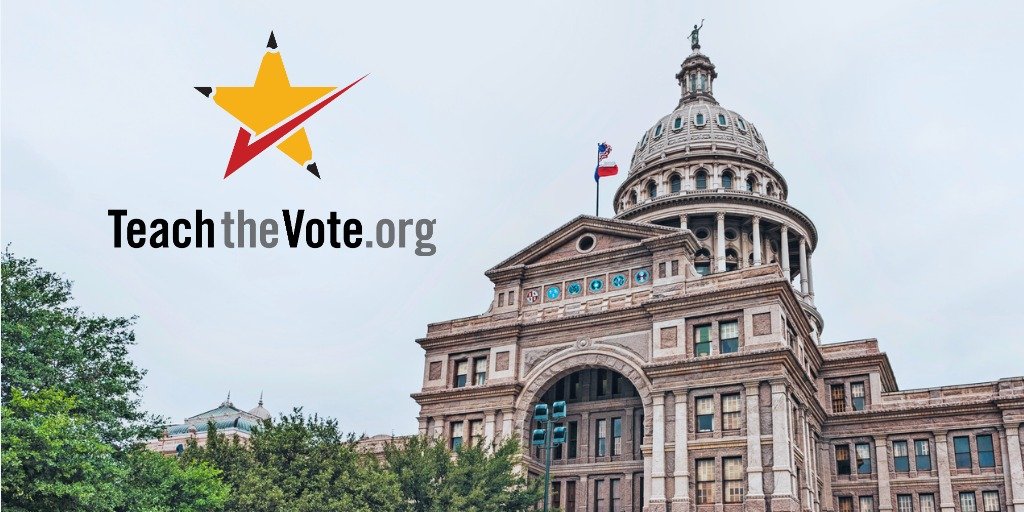TEA shares remote learning guidance for fall 2020

COVID-19 Curriculum | Instruction Miscellaneous
Date Posted: 6/24/2020 | Author: Andrea Chevalier
Despite announcements last week that schools would be able to safely open in the fall, Texas policy makers have been quietly saying for months that as many as 20% (or maybe even more) of Texas' 5.4 million students may not return to their neighborhood school when it reopens for the 2020-21 school year due to continued concerns regarding the coronavirus pandemic. With this in mind, the Texas Education Agency (TEA) has been working on a funding framework that encompasses distance learning options within existing law, as opposed to simply waiving requirements as the state did out of necessity at the end of the 2019-20 school year.

The agency's Remote Instruction Guidance and accompanying 2020-21 Attendance and Enrollment FAQ released yesterday, June 23, include two remote learning options for school districts, along with funding assurances and methods for gathering attendance. These changes will only be in effect for the 2020-21 school year and are only possible under TEA's waiver authority.
Several aspects of the provided options are promising, while others are concerning. The agency's focus on tying student-to-teacher contact to funding will help ensure that students interact with schools and teachers on a daily basis. On the other hand, the agency does not provide guidelines for ensuring student-to-student interaction, which could hinder important social and emotional development. TEA does take a step in the right direction by refraining from simply expanding full-time virtual programs, as some legislators have recommended, under the Texas Virtual School Network, which has not proven to be an effective learning model for students in the past.
There remain some gaps in TEA's guidance with regard to funding and resources. As many have said throughout this pandemic, districts are being asked to build a plane while flying it, and without any new resources to boot. TEA's proposed "hold harmless" approach to calculating Average Daily Attendance (ADA) for the first 12 weeks of the new school year will help districts that experience a significant enrollment drop, but many believe this accommodation should be extended to cover the entire fall semester or the full year. School attendance may not stabilize until well after a vaccine has been widely distributed, which Director of the National Institute of Allergy and Infectious Diseases Dr. Anthony Fauci told lawmakers Tuesday could be at the end of 2020 or early in 2021.
Here is a summary of the remote learning options outlined by TEA in its most recent guidance:
Synchronous InstructionIn the remote synchronous learning model, students "sit" in virtual classes with their teachers and teachers take attendance much like they would in the physical school setting. This method generates funding based on a minimum number of daily minutes, which do not have to be consecutive. A defining feature is that PK-2 students are not eligible for funding through this model, as many agree that this type of real-time virtual classroom environment is not developmentally appropriate for young students who may have difficulty sitting in front of a computer screen for long periods of time. In order to offer this remote synchronous instruction method, districts must submit an attestation, complete a checklist of preparation items, and post the attestation on their website.
Asynchronous InstructionIn the asynchronous model, students will be expected to complete instruction and school work independently, with intermittent teacher interaction. According to TEA, even the youngest grades can participate in this self-paced method, and attendance will be determined based on student "engagement." Engagement will be specifically defined by each district, but TEA notes that it can be shown through progress in the Learning Management System (LMS), student/teacher interactions in the LMS, or turning in an assignment. Engagement must happen any day a student is marked present, which would then generate full-day funding.
The asynchronous model requires more work on the district's end than the synchronous model. Districts will have to apply to TEA and submit a plan that details expectations for scheduling, curriculum, student progress, and educator support. For this reason, the agency is providing an attendance grace period or "hold harmless" through the end of the third six-week period while districts go through the approval process.
The Texas Virtual School Network (a not-so-new method)TEA also reminds districts in its guidance that the Texas Virtual School Network (VSN) is available. Funding for this method is based on course completion, and districts can choose to enroll students in up to three VSN courses. As we have previously reported here on our blog, some state lawmakers have been advocating an expansion of the VSN. However, ATPE supports the limitations in statute that prevent the expansion of virtual schooling, as data have repeatedly shown that student performance in Texas virtual schools falls well below that of students in brick-and-mortar settings.
Funding with "Grace"TEA will implement an ADA grace period or "hold harmless" provision for the first two six-week periods of the school year so that if a district experiences more than a 1% loss in enrollment compared to the first two six-week periods of the 2019-20 school year, those weeks won't be counted in the overall ADA calculations that determine funding. As mentioned above, an additional grace period for the third six-week period will be applied for districts adopting the asynchronous model. This grace period does not apply to charter schools opening in 2020-21, as they do not have comparative ADA data from a previous year of operation. Additionally, district ADA numbers will be capped at the attendance rate of the 2018-19 school year, with some exceptions.
Rights to On-Campus InstructionTEA's plans reflect Commissioner of Education Mike Morath's desire to make instruction in the 2020-21 school year similar to what instruction looked like before COVID-19, while keeping district offerings subject to parent wishes. In other words, whether parents request remote or on-campus instruction for their child, the district must meet the request. TEA's guidance confirms limitations on schools converting to a virtual format. The agency's FAQ document advises that schools will only be allowed to close for up to five days at a time if someone at the school is found to have been infected. The 90/10 attendance rule for students and truancy laws will remain in effect, and the agency does not plan to offer attendance waivers, instead directing districts to alter their calendars to build in flexibility.

ATPE is actively monitoring and analyzing all of TEA's guidance, including the latest recommendations on remote instruction and urges educators to share their voices with district leaders and campus administrators as plans for remote learning are made locally. Educators can find more information on COVID-19 by visiting ATPE's frequently-updated Coronavirus FAQ and Resources page.
NOTE: TEA has been frequently updating its guidance on the website. We advise educators to check for the latest versions on TEA's COVID-19 Support and Guidance Page.
CONVERSATION
RECOMMENDED FOR YOU

Congress | Federal, COVID-19, Curriculum | Instruction, Educator Compensation | Benefits, Educator Preparation | Certification, Elections, School Finance, School Safety, Testing | Accountability, Texas Legislature
08/04/2023
Teach the Vote’s Week in Review: Aug. 4, 2023
ATPE weighs in on current political climate for education in Houston Chronicle story—plus, a look at federal ed prep and special education developments.

Congress | Federal, Educator Preparation | Certification, Miscellaneous, Retirement | TRS | Social Security, TEA | Commissioner | SBOE, Texas Legislature
07/19/2024
Teach the Vote's Week in Review: July 19, 2024
Get the latest from this week’s SBEC and TRS Board of Trustees meetings; plus, earn CPE by watching the ATPE Summit Advocacy Update on demand.

07/09/2025
Gov. Greg Abbott makes it official: Special session to begin July 21
The governor released the official proclamation Wednesday to bring the 89th Texas Legislature back to Austin for a special session.

